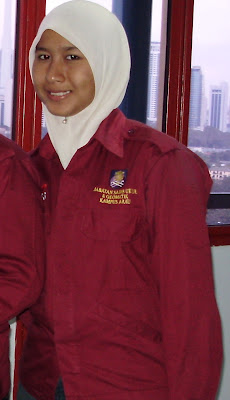SECTION 6: BUILDING OR LAND THAT CAN BE DIVIDED IN TO PARCEL.
Section 6 was described about building or land capable of being subdivided into parcel. Sec 6 subsection (1) was describe any building that have two or more storey as one lot under final title (whether registry or Land Officer title) can being sub divided into parcel each of which is to sub held under a strata title or an accessory parcel.
Otherwise section (1A) describe any building that having two or more building held as one lot under final title (Registry or Land Office title) can subdivided into Land parcels each of which is to be held under a strata title or as an accessory parcel. But, the building under this section must below 4 storeys.
The owner can be apply strata for their double storey bungalow and 2 multi storey building that refer in section 6(1) because the owner have in the same lot under final title and under Registry or Land Officer Title.
“Accessory parcel” means any parcel shown in strata plan as an accessory parcel which is used or intended to be used in conjunction with parcel that contained in sec 4. Example of accessory parcel is like parking lot, place to put flower pot, balcony, awning and etc.
SECTION 8 : CIRCUMSTANCES IN WHICH IT IS COMPULSORY FOR A
PROPRIETOR TO APPLY FOR SUBDIVISION OF A BUILDING OR LAND.
(1) The proprietor of any alienated land on have a completed building capable of being subdivided or strata title in period under subsection(2). If the proprietor did the deal of the land’s or sale and purchase (S&P) done, so the owner can be apply strata title after S&P.
(2) The period within which the requirement of subsection(1) shall be complied with is as follows :
a) In the case of a building completed on a date after the commencement of this subsection that is 23/02/1990.
(i) Before the building is complete and S&P done before the building is complete, so date to apply strata title is after the completed building and get the CF(Certificate Fit Occupy).
The period of time that the owner can apply the strata title is 6 month from that all construction building was completed.
(ii) For the building is complete and the sale and purchase (S&P) done after the completed building so date for apply strata title is date after the S&P done.
The period of time that the owner can apply the strata title is 6 month from that the sale and purchase (S&P) done.
(6) Further period to apply the strata title.
Ø If the period of time that owner can apply the strata title is 6 month and the owner is fail to apply strata title, then the Director for any further period not exceeding three month.(Extended 3 month for the apply the strata title).
(7) If the application is not be apply in the period specified in subsection(2) and in the case of subsection(6) within the period of such extension granted in respect of a building or land, the original proprietor shall be guilty of an offence and shall, on conviction, be liable to a fine of not less than ten thousand ringgit but not more than one hundred thousand ringgit and to a further fine of not less than one hundred ringgit but not more than one thousand ringgit for every day during which the offence continues to be committed.
Ø Basic penalty : RM10,000 – RM100,000
Ø Penalty every day if not apply strata title : RM100 – RM1,000
SECTION 9 : CONDITION FOR APPROVAL
(1)The director can be approve if all condition are satisfied :
a) Get satisfied from land surveyor.
i. The situated of building must in 1 lot.
ii. To be make sure awning, gathering hot over the road reserve if over must apply permits use of space.
b) Must been in two certified.
Ø Architects register under the Architects Act 1967.
Ø Professional Engineer registers under the Registration of Engineer Act 1967.
c) The subdivision would not contravene any restriction the land lot.
d) The subdivision would not be contrary to the provision of any written law.
e) No item of land to do strata.
f) That constant in writing like leases.
g) Every parcel must have share units.
· If there is bad happens for example burning the owner can apply the insurance and the insurance will get by following the shyer.
· The more shyer unit the more owner will get the claim.
h) That each of parcel must have a road access, can’t share with another.
i) Must stay more 21 years after that can apply strata.
j) The building no subject to any charge or lien.
k) If his land is qualified title, he must get the Certified Plan and compile the CP with his application.
l) Must get the certified from Local Authority.
SECTION 10. APPLICATION FOR SUB DIVISION OF BUILDING OR LAND
(1) The application for approval of the Director for strata needs two form:
· Form 1A
Subdivision of land under subsection 6(1A)
o In this case the bungalow use this form because the owner want to subdivide in to land parcel but it also use Form 1 because Form 1is subdivision of buildings or buildings and land
· Form 1
Subdivision of buildings or buildings and land
o In this case the condominium use this form because the owner want to subdivide and get strata title for one building of condominium.
There a few things that the owner should follow for the application:
a) pay any fee
aa) submit the triplicate(3) copy of building plans approved by the planning authority
b) one strata plan that include:
o location plan
o storey plan
o delineation plan
ü if the delineation plan is not include, that is just for subdivision of land only, therefore the application will not accepted.
v all the plans above must be approved by land surveyors as follows:
i. Land surveyors must ensure that all the plans above same with the original plan.If not same, land surveyor must create a building plan and approved by the Architect. The building plan named As tribute Plan must be sent with the Strata Plan.
ii. In a storey plan, the boundaries of the parcels follow features of permanent construction appearing in the building.
c) a certificates of a land surveyor that confirmed buildings are in a lot and certificates from Professional Architect and Professional Engineer that confirmed the plans are following original plan buildings.
caa) any permit and if there is permit in use space, it should be include.
cb) if the title is a qualified title, submit it with there copy of certified plan that been approved by Director of Survey
d) the written consents to the making of the application of every person who at the time of the application is entitled to the benefit of:
o a charge of the land
o a lease of the whole or any part thereof
o a charge of such a lease
o a lien over the land or any such lease.
e) the issue document of title of the lot.
(2) Every location shall:
a) Specify the number of lot, the title number of the land and the area of lot.
b) delineate the boundaries and boundary marks of the lot
o show all the position of buildings
o show the part of building that want to subdivided
o the case of an application for subdivision of land into land parcels, delineate the boundaries and boundary marks of the lot and the parcels showing the position of all the buildings
(3) Every storey shall:
a) Specify the number of lot, the title number of the land and the building and numbered storey
b) Each proposed parcel no needs a bearing but only a distance.
c) show the parcel with the Form 1
d) specify the approximate floor area of each parcel
e) Distinguish such parts as are not to include in any of parcels but are to become part of the common property for example the corridor that not included in parcel but want to become part of common property.
(3A) Delineation plan shall:
a) Specify the number of lot, the title number of the land and the parcel that connection to the plan
b) Each proposed parcel need a bearing and a distance
c) Show every parcel by number in Form 1
d) Specify the area of lot
e) distinguish such parts as are not to included in any of parcels but are to become part of the common property.
(6A) For example, if the strata plan was missing, an architect must redraw it and shall be accompanied:
(a) Three copies of building plan ( certified by Architect or by a land surveyor) as having been drawn according to the actual features of the building and as truly representing those features; and
(b) The local planning authority is nevertheless satisfied that the building as so represented satisfies planning requirements.
SECTION 43: DUTIES AND POWERS OF MANGEMENT COOPERATION
- The overall duties of management cooperation are to supervise gated and guarded.
- For example if the lamp of corridor has been broken, the drainage is not proper therefore the management cooperation will repair properties by following their own method.
- The members of management cooperation are from
- The members of management cooperation are from the residents in that location in gated and guarded.








